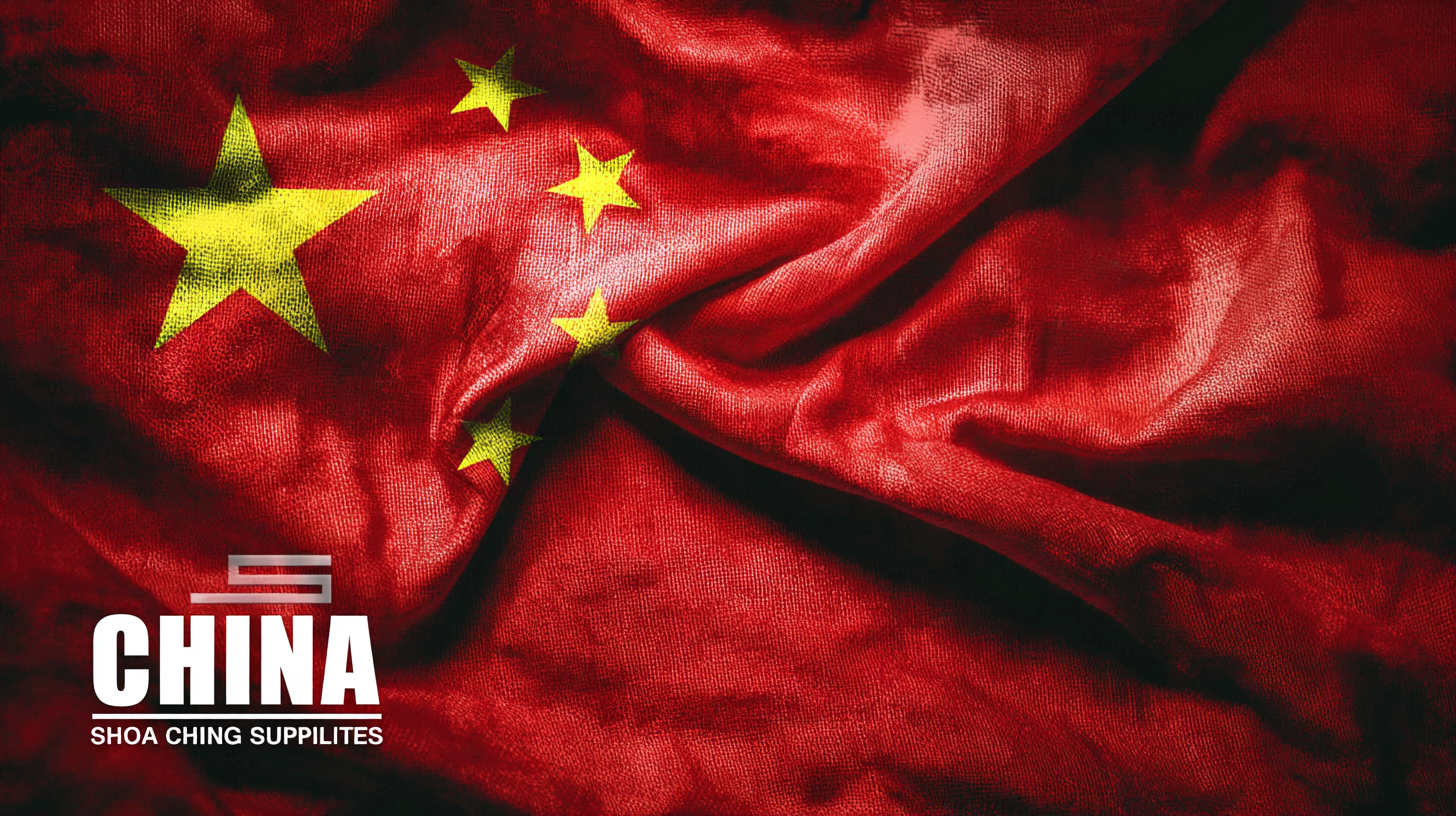
Addressing Common Challenges with Sourcing from the Best China Suppliers
Sourcing from Chinese suppliers has become an essential strategy for businesses aiming to leverage cost-effective manufacturing and high-quality products. According to a report by McKinsey & Company, over 50% of global firms look to China not only for its affordable labor but also for its advanced manufacturing capabilities, which contribute to a significant 19% of the nation’s GDP.

However, navigating this landscape comes with challenges, such as quality control, cultural differences, and supply chain disruptions. In fact, a survey by Deloitte found that 70% of companies sourcing from China encountered difficulties in maintaining consistent product quality.
This blog will delve into the common challenges faced by businesses when sourcing from the best suppliers in China and provide insights on how to mitigate these issues effectively. Understanding these dynamics is crucial for organizations striving to maintain a competitive edge in today's global market.
Understanding the Evolution of China's Sourcing Landscape by 2025
As we approach 2025, the sourcing landscape in China continues to evolve, driven by technological advancements and shifting market dynamics. According to a recent report by McKinsey, over 70% of global companies are revisiting their supply chain strategies to enhance resilience and efficiency. This trend is reshaping the procurement environment, urging businesses to adopt more integrated and data-driven sourcing methods. The emphasis is now on digital platforms and AI-driven analytics, enabling companies to make informed decisions faster and with greater accuracy.
**Tip:** Leverage technology to streamline your sourcing process. Invest in platforms that provide real-time data on supplier performance, market trends, and pricing variations. This will allow you to identify the best suppliers quickly and reduce the risks associated with traditional sourcing methods.
Additionally, sustainability is becoming a critical factor for sourcing decisions. According to a report from the World Economic Forum, more than 60% of consumers are willing to pay more for sustainable products. To remain competitive, suppliers in China are increasingly adopting green practices and obtaining certifications. By aligning your sourcing strategies with sustainable practices, you not only meet consumer demand but also contribute to global sustainability goals.
**Tip:** Assess the sustainability practices of potential suppliers. Look for certifications and transparency in their manufacturing processes to ensure your supply chain aligns with your company’s values.

Key Challenges in Sourcing from Chinese Suppliers: A 2025 Perspective
Sourcing from Chinese suppliers continues to present unique challenges, especially as we look ahead to 2025. According to a report by Deloitte, about 70% of companies have faced difficulties in managing quality and compliance issues when sourcing from China. These challenges can stem from language barriers, an understanding of local regulations, and the need for thorough oversight in production processes. With the increasing complexity of global supply chains, it’s crucial for businesses to stay proactive in overcoming these hurdles.
**Tip:** Establishing a strong communication channel is vital. Consider hiring local agents or consultants who are familiar with the Chinese market to bridge gaps and ensure your requirements are clear and understood.
Moreover, logistics remain a significant concern as companies face rising costs and longer lead times. A McKinsey study highlights that shipping costs have surged by over 300% since 2020, necessitating innovative solutions to mitigate these expenses.
**Tip:** Evaluate and diversify your logistics options. Developing relationships with multiple freight forwarders can provide more flexibility and potentially lower costs.
By anticipating these challenges and employing strategic approaches, businesses can enhance their sourcing experience from Chinese suppliers and position themselves for greater success in a competitive market landscape.
Addressing Common Challenges with Sourcing from the Best China Suppliers - Key Challenges in Sourcing from Chinese Suppliers: A 2025 Perspective
| Challenge | Description | Potential Solutions | Impact Level (1-5) |
|---|---|---|---|
| Language Barrier | Communication difficulties due to language differences. | Use of bilingual staff or translation services. | 4 |
| Quality Control | Ensuring product quality meets standards. | Regular audits and third-party inspections. | 5 |
| Cultural Differences | Differences in business practices and etiquette. | Cultural training for teams involved in sourcing. | 3 |
| Legal Compliance | Navigating the legal landscape in China. | Hire local legal advisors for compliance issues. | 5 |
| Supply Chain Disruption | Risks from political or environmental factors. | Develop alternative supply sources and contingency plans. | 4 |
Top 5 Strategies to Identify Reliable Chinese Suppliers in the Digital Age
In today’s rapidly evolving digital marketplace, identifying reliable Chinese suppliers is more crucial than ever for businesses seeking to remain competitive. With China leading global e-commerce alongside the U.S. and Japan, employing the right strategies can significantly optimize sourcing decisions. According to various industry reports, about 40% of global e-commerce transactions occur in China, making it essential to leverage digital tools for supplier vetting.
One effective strategy is to utilize established supplier directories that focus on dropshipping and wholesale businesses. In 2025, a report identified 15 top dropshipping suppliers who have garnered excellent reputations based on customer reviews and reliability metrics. Leveraging these directories can provide not only access to reliable suppliers but also insights into market trends.
Furthermore, integrating advanced AI search technologies can enhance the supplier selection process, ensuring businesses engage only with vendors that align with their quality and service expectations.
In addition, engaging in thorough due diligence by analyzing a supplier’s production capabilities and financial stability can prevent costly setbacks. Recent studies indicate that about 25% of businesses face challenges due to unreliable suppliers, underscoring the significance of this approach. By adopting these strategies, companies can navigate the complexities of sourcing from China more effectively in the digital age.
Leveraging Technology for Efficient Sourcing from China: Trends for 2025
Sourcing from China has become increasingly complex, prompting companies to leverage advanced technologies to streamline their operations. By 2025, trends such as artificial intelligence, blockchain, and the Internet of Things are expected to revolutionize supply chain management, offering unprecedented opportunities for efficiency. These technologies enable businesses to collect and analyze large data sets, enhance transparency throughout the supply chain, and predict disruptions before they occur. As companies look to optimize their sourcing strategies, integrating these technological solutions will be crucial in addressing challenges and ensuring smooth operations.

Moreover, the evolution of supply chains in 2025 aligns with broader shifts in global dynamics. Organizations must adapt to a rapidly changing landscape, characterized by increasing geopolitical risks and changing consumer expectations. Emphasizing sustainability and clean energy innovations will not only fulfill regulatory requirements but also resonate with a more environmentally conscious customer base. As the procurement landscape evolves, staying ahead of these trends will be essential for businesses aiming to source effectively from top suppliers in China and maintain a competitive edge in the marketplace.
Navigating Quality Control: Best Practices in Working with Chinese Suppliers
When sourcing products from Chinese suppliers, quality control emerges as a crucial focal point for businesses aiming to maintain high standards. One effective best practice is to establish clear communication from the outset. This entails drafting detailed specifications and expectations for the products you desire. Utilize visual aids like diagrams and samples to articulate your requirements, ensuring that both parties share a common understanding of the desired outcome. Regular updates and open lines of communication can significantly reduce misunderstandings that might lead to quality issues.
Furthermore, incorporating third-party inspection services into your sourcing strategy can bolster quality assurance. By engaging professionals to conduct pre-shipment inspections, you can identify and rectify any defects before products are shipped. This proactive approach minimizes the risk of receiving subpar items and can save time and resources. Additionally, building a long-term relationship with suppliers can foster trust, encouraging them to prioritize quality and reliability. Strong collaboration facilitates feedback loops, allowing for continuous improvement in product standards and ultimately leading to better outcomes for both businesses and consumers.
